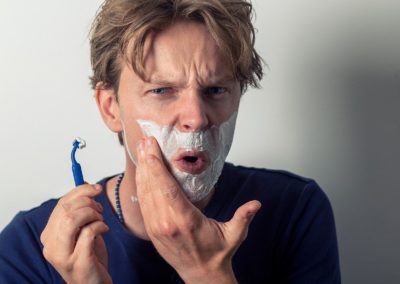How To Wash Curly Hair & How Often

written by nail expert Jess Rowley
How To Wash Curly Hair & How Often
So you may have heard different opinions on how and how often you should wash curly hair– you would think it would be basic knowledge knowing how to wash your hair, right?
Well, caring for curly hair is slightly more complicated.
But washing your hair incorrectly can be extremely damaging to your hair, especially curly hair. Curly hair is the most fragile out of all of them and needs extra care.
Since the natural oils from your scalp have a tough time traveling through every spiral and ringlet, the ends of curly hair tend to be very dry and brittle. Over-washing can strip the scalp and dry out the ends even more.
But don’t panic; it’s not all doom and gloom.
To make things easier, I’m here to guide you through how and exactly how often you should be washing your curls. I reccomend washing your hair with SF shampoo once every week or two and co-washing in between, but this could be different for you.
The best way to work out how often you should wash your curls is really down to you and your hair type, so instead, I can only reccomend it.
Here are the best methods for washing curly hair and my recommendations on how often based on your curl type and hair porosity.
How Often Should You Wash Curly Hair?
This differs from person to person and from hair type to hair type, making it quite difficult to judge how often you should really wash your hair.
Some people say it’s best to wash your hair as little as possible, but to be honest, I think it is a bit of BS. If you’re using a sulfate-free, gentle shampoo, I don’t see the problem.
Many people say that if you overwash your hair, it will make it “more greasy,” which may be the case if you’re over-stimulating the scalp but gently washing your hair will prevent any scalp issues and help unclog pores.
That being said, this all depends on your hair type; while you should regularly cleanse your scalp, how often and whether you use low-poo shampoo or a co-wash depends on your hair type and what your hair needs.
Curly hair is prone to dry, and while sulfate-free shampoos are ideal, some can still be quite stripping, so be sure to go for a hydrating, gentle shampoo or even consider using a co-wash.
Co-washing is washing your hair with a cleansing conditioner; it is ideal for extremely curly or coily hair as it refreshes your hair without drying your ends out.
Here are my recommendations of how often you should wash your hair and what you should use based on your hair porosity and curl type.
Thick, coarse, coily, or tight curls:
These are my 3B to 4C curlies and coilies. This hair type is most prone to dryness because the naturals oils from the scalp struggle to reach the ends of the hair.
You should avoid washing your hair with shampoo and rather switch to a co-wash instead, as despite the shampoo being sulfate-free, it can still be quite harsh on this curl type.
I recommend washing your hair with shampoo every 1-2 weeks with a sulfate-free shampoo to help unclog any pores and cleanse the scalp.
Instead, in between washes, you should try co-washing with water and a cleansing conditioner, or even just a water wash by massaging your scalp with just water.
This should help refresh and cleanse the hair while keeping the ends hydrated and moisturized; this should help tackle dryness and frizz and remove any excess oil.
High porosity hair:
If you have high porosity hair with this curl type, then your hair will be extra dry as it struggles to retain moisture. For this hair type, you should try a cool rinse after each wash, use hair oils to seal in moisture, maintain a good deep conditioning routine.
This should help your hair retain moisture and help to seal the cuticle to prevent the moisture from escaping.
Low porosity hair:
If you have low porosity hair, your hair will struggle to soak up moisture; hair products tend to sit on top of the cuticle rather than enter the cuticle as the cuticle is flat-lying.
The best way to moisturize this hair type with tight, coily curls is to open up the pores with a heat-treated mask or hat; this should help open the pores and help the moisture soak in.
There are some pretty incredible moisturizers for curly hair!
Once the moisture has entered the strand of hair, then it tends to have no issues with retaining as the cuticle is so small.
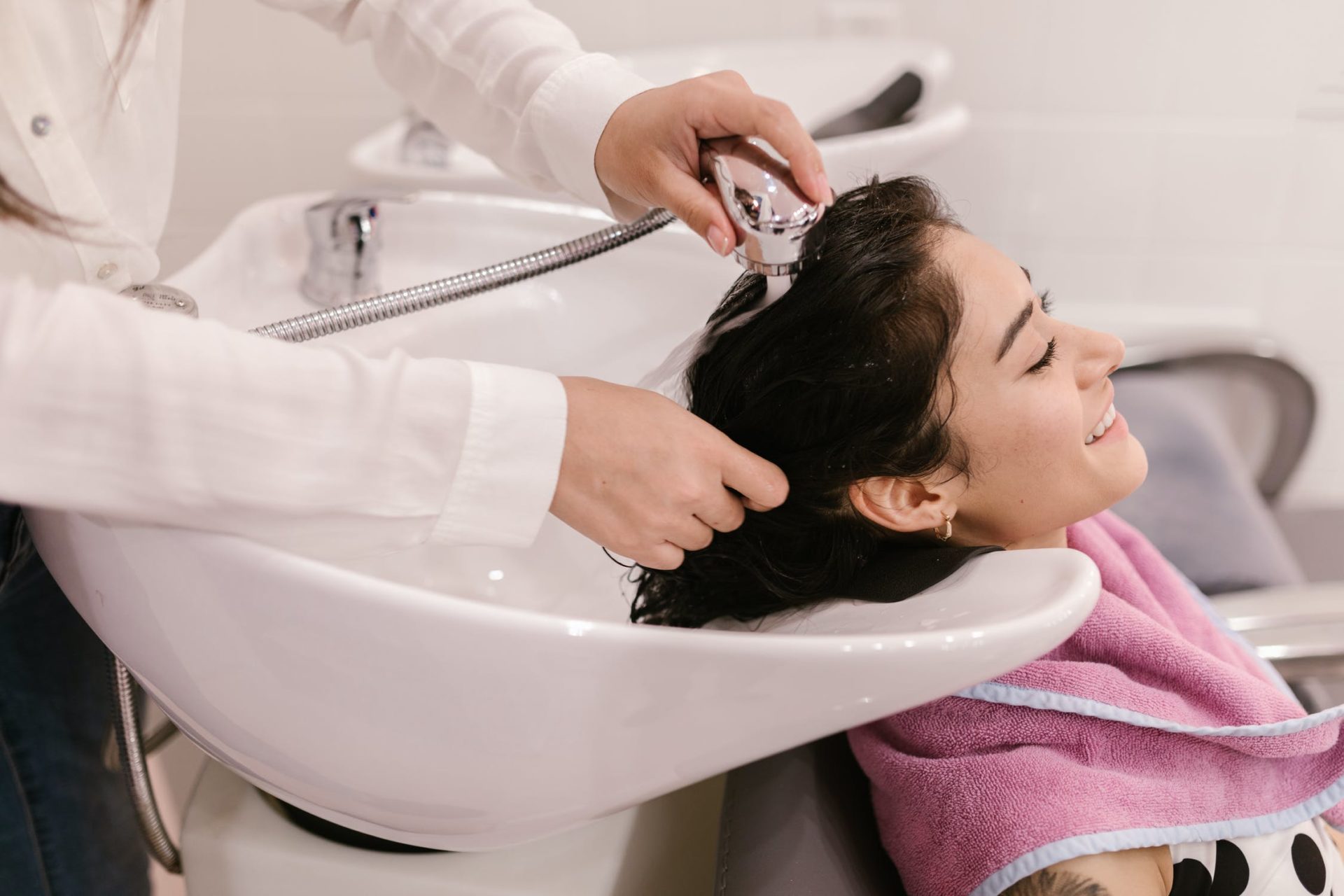
Medium curls and waves:
This is for my medium thickness 2A-3B hair girlies. Your hair is the ideal curl type as your natural oils from your scalp can quite easily reach the ends, so your hair tends to be less dry.
You can get away with shampooing once or twice a week; you can also frequently co-wash in between shampoos to keep the curls refreshed, especially if you work out frequently.
High porosity hair:
For high porosity hair with this curl type, you should wash 1-3 times a week with a gentle, hydrating shampoo or co-wash, and make sure you are closing the cuticle with a cool wash.
Sealing the cuticle with an essential, hydrating hair oil like jojoba, castor oil, and if your curls can take it, then coconut oil is also good.
Maintaining a healthy deep condition is also ideal, at least once a month.
Low porosity hair:
Again, for low porosity hair, you should try to maintain a regular hydrating wash, whether that is once a week with sulfate-free shampoo and co-washes in-between.
While shampooing, you should try to open the cuticle with a warm but not scolding hot rinse as this can damage curls. Rinse for a minute or two, then shampoo at a lukewarm temperature.
Make sure you top of the wash with a cool rinse to seal the moisture in the cuticle, maintain regular heat-treated deep conditioning masks to help soak up moisture into your hair.
Fine curls and waves:
So this one is really for my type 2 wavy girls or if you have type 3a hair. It is difficult with fine hair as it feels like your hair feels oily by the evening, especially if you’re using styling products.
The best method for cleansing fine hair is likely to be with a sulfate-free shampoo rather than a co-wash. But if your hair is particularly dry, I would still recommend you do a co-wash rather than a shampoo.
Co-washes may cause your hair to appear greasy at first, but naturally, over time, your hair will adapt, trust me. I would experiment with co-washing, and if it doesn’t work after a couple of weeks, then switch back to a sulfate-free option.
If co-washing isn’t working for you, I would reccomend cutting down shampooing your hair to 2-3 days a week, doing a water wash in between to help with excess oils,
But this may be different for everyone; it also depends on your city’s water quality, your hair type, so whenever your hair feels dirty, or if you feel you have buildup, then that’s a sign to wash.
Of course, your hair type is not the only contributing factor to how often you should wash your hair. For example, your porosity and your city’s water qualities will also affect what might be best.
For the best shampoos for fine curly hair, check out my other guide!
High porosity hair:
With this hair type, you will struggle to retain moisture, but applying heavy oils to your hair will just make it appear greasy, which is the last thing we want.
Instead, you should opt for a lightweight oil to help seal in moisture and only apply a fine layer to the ends of your hair.
Argan oil, almond oil, grapeseed oil, and jojoba oil are great hydrating oils that won’t leave a greasy residue on your hair, making them ideal for fine curly hair.
Low porosity hair:
Having fine hair with low porosity can be quite a challenge since hair products like to sit on top of the hair strand, so it will likely leave a greasy residue.
For this type of hair porosity and with curly or wavy strands, I would recommend deep conditioning heat treatments and a hydrating cleanser; you can also use lightweight oils, as I mentioned above, to help nourish if your hair is particularly dry.
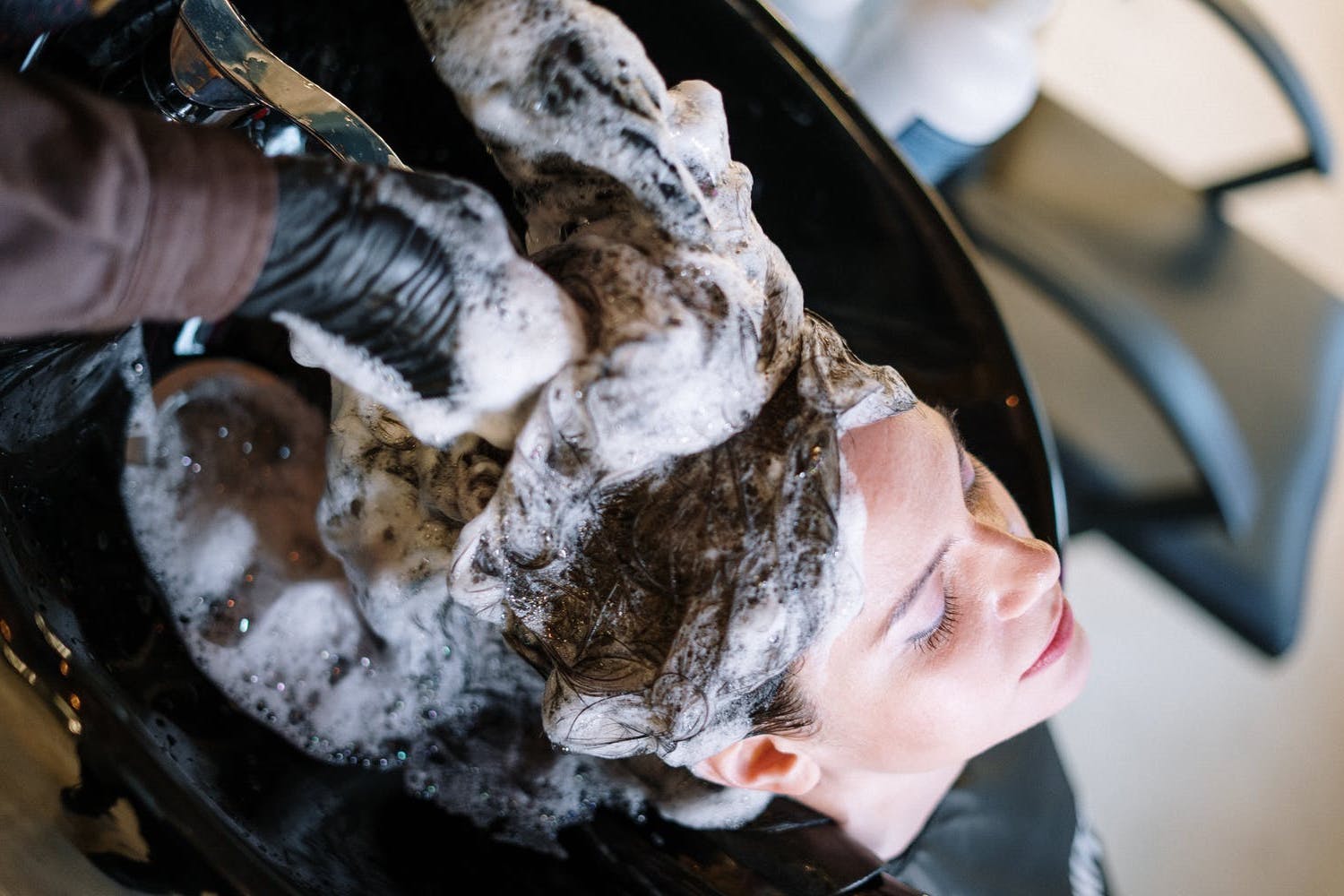
How to wash natural curly hair:
Right, let’s strip it back to the basics; now you know how often you should wash your curly hair; how about how should you wash it?
We will go into how to co-wash your hair shortly, but how do you shampoo naturally curly hair for now?
Step 1: Rinse with water for a minute:
Before we go in without shampoo, we want our hair to be sopping wet; I tend to do a 1-minute rinse with just water, massaging my scalp.
This helps to stimulate blood flow and help break down oil buildups. If you have low porosity hair, this is when you do a warmer rinse to help open the cuticle.
Step 2: Massage Cleanser into your scalp:
You must use a sulfate-free shampoo; all the products you use should also be free of non-soluble silicones and waxes to prevent buildup.
Traditional drugstore shampoos are packed with detergents that can really strip the natural oils in your hair and dry out the ends. Since curly hair is already brittle and dry, it is not recommended that you use sulfate shampoo.
Whether you’re using a low-poo shampoo or cleansing conditioner to wash your hair, make sure that it has gentle ingredients. Check out the full list of ingredients to avoid in my breakage down on the Curly Girl Method guide here.
I massage my scalp for a further 60 seconds with the tips of my fingers and continue to massage while rinsing; the only thing that REALLY cleans your scalp is a good massage.
Make sure you don’t massage your curls above your head; this will make detangling your curls a painful and a hell of a long process.
Try to apply your shampoo or cleanser to the root and work it through to the ends; this will help keep your curls knot-free and won’t disrupt the natural curl pattern.
Step 3: Apply conditioner and start detangling:
With curly hair, brushing your curls while dry is a no-go. Instead, you have to detangle while wet, being extra careful as your hair is most fragile while wet.
This is why I recommend detangling with your fingers or a wide-tooth comb while the ends of your hair are soaked with conditioner; this will give your hair slip and help easily detangle knots.
Be patient and do this step in sections, starting underneath and working your way to the top; I do a rough detangle while the conditioner is on, then thoroughly after rinsing out and applying my leave-in conditioner.
Combing your hair while the conditioner is on the ends also helps encourage as much moisture as possible to enter the cuticle– which is ideal if you have low porosity hair.
As I said earlier, you have to be sure to avoid silicones in your conditioners, these leave a plastic film over the ends of your hair, and while your hair will ook shiny, it will lead to buildup and can be quite drying.
Silicones can only be removed with a sulfate shampoo, so if you accidentally use silicones, be sure to do a ‘reset’ wash with regular, clarifying shampoo.
Step 4: Apply styling products to sopping wet hair:
After showering, I prefer to work in sections when applying my styling cream or gel. Instead of applying them in the shower, I use a water spray, soak each section before applying my gel, and then style with my Denman Brush.
Most curly girls prefer to apply all their products in the shower before drying their hair, but I find I have a more defined curl when I use this technique.
Step 5: Dry your curls:
Once you’ve washed your curly locks, you can either plop, diffuse or squeeze out the excess moisture with a cotton t-shirt or microfibre towel and leave it to naturally dry.
Check out my full guide here for the best way to dry curly hair.
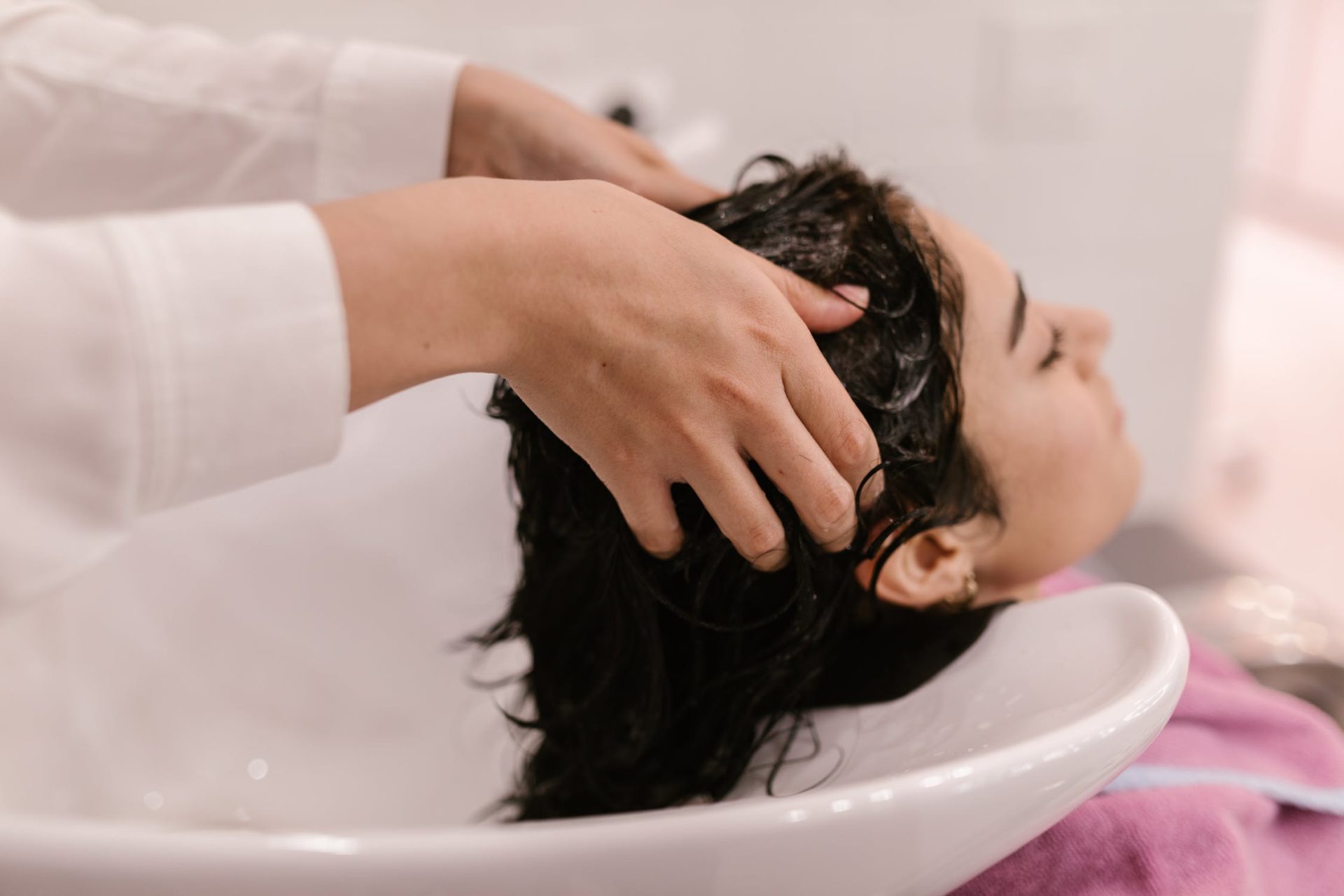
How to co-wash curly hair:
If you have extremely dry curls that need some TLC and a serious moisture boost, then I would reccomend washing your hair with conditioner rather than sulfate-free shampoo.
Some sulfate-free shampoos can still strip your hair, they may be free of stripping ingredients, but some brands still include quite harsh chemicals which can dry out your hair.
This is why so many girls have switched to washing their hair with a cleansing conditioner, a co-wash. It is extremely effective for coily hair or really curly hair that doesn’t receive much natural moisture from the roots.
Here’s a technique I personally love to use when co-washing my curls:
Fully drench your hair with water:
Before you go in with the cleansing conditioner, you’ll need to soak until it is sopping wet; this should help loosen debris, making it easier to rinse out dirt and grime.
This should also help distribute the product evenly throughout the hair to prevent any greasy spots where you may have gone overboard with the conditioner or accidentally missed it.
Coat your hair with conditioner:
Forget the BS about how you need a dime-size amount of conditioner; when using a cleansing conditioner, you need enough to cover the root of your hair to the tip.
For some people, if it can be as much as a golf-ball-size amount, don’t be shy with the conditioner as remember you’re not just conditioning your hair but also cleansing.
Massage, massage, and massage some more:
You want to massage your scalp like no tomorrow to help evenly distribute the conditioner from the scalp to the ends. This should help break down any residue leftover from your styling products.
You should be massaging your scalp for at least 60 seconds to help stimulate the blood flow and remove all dirt and grime from your roots; you need to work it more than shampoo to notice the most benefits.
Once it has been evenly distributed and you have a spare few minutes, I would reccomend leaving it for 3 to 5 minutes (especially if your hair is particularly dry or damaged), and then it will act as a mask.
Then after those 5 minutes are up, I would reccomend giving the ends of your hair a little scrunch, then rinse, dry with a microfibre or cotton t-shirt, and apply styling products. The key is to scrunch styling, cream, gel, serum, etc., upside down to ensure the cuticles are absorbing the product.
Summary
So there you have it, ladies, the best way to wash curly hair and how often you should wash your luscious curly locks.
When it comes to curly hair it is all a bit of trial and error, working out what works for your hair type and your curl type and then adapting your routine.
Try co-washing your hair in between washes, especially if your curls are particularly dry, and try to maintain a deep conditioning routine.
Working out your hair care routine is the key to perfect curls.

Best L’Oreal Products For Men
[Review] in 2022 written by nail expert Jess RowleyCheck out the results fast - here are our review winners[dica_divi_carousel item_width_tablet="400px" item_width_phone="345px"...

Best Neutrogena Skincare Products
[Review] in 2022 written by nail expert Jess RowleyCheck out the results fast - here are our review winners[dica_divi_carousel item_width_tablet="400px" item_width_phone="345px"...
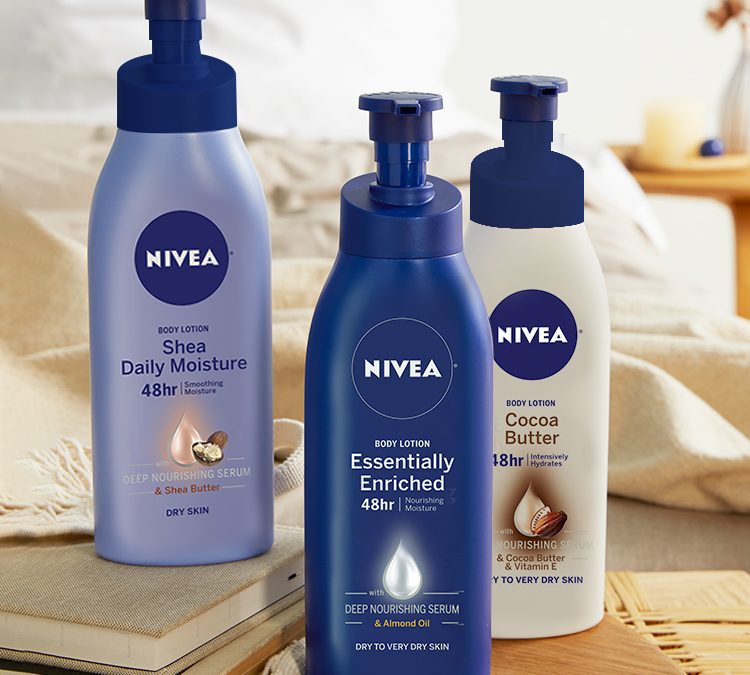
Best Nivea Products For Men
[Review] in 2022 written by nail expert Jess RowleyCheck out the results fast - here are our review winners[dica_divi_carousel item_width_tablet="400px" item_width_phone="345px"...
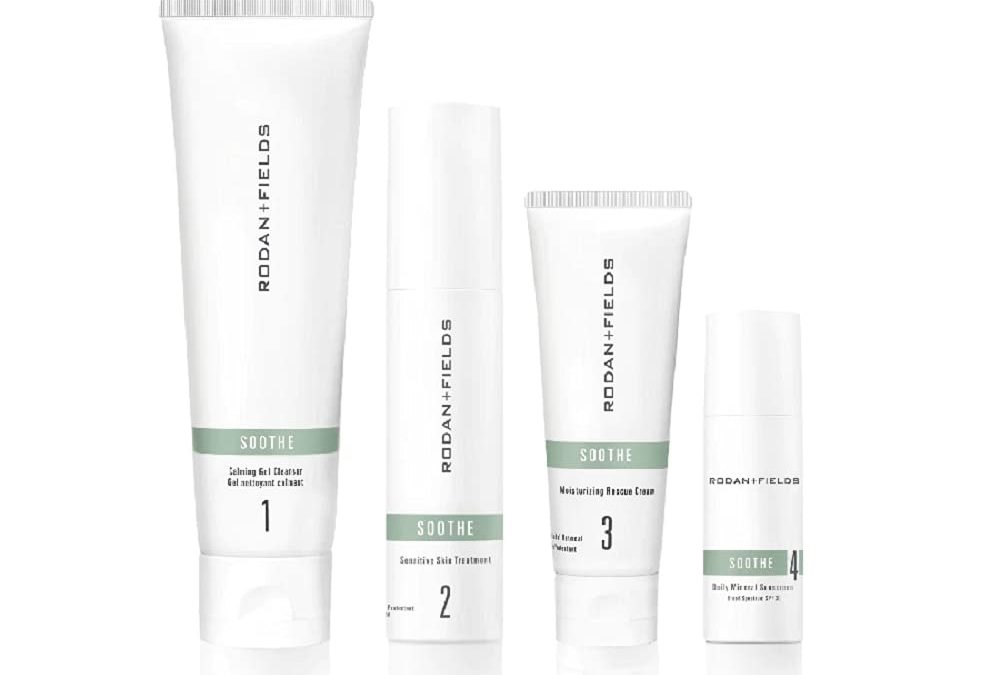
Best Rodan+ Fields Products
[Review] in 2022 written by nail expert Jess RowleyCheck out the results fast - here are our review winners[dica_divi_carousel item_width_tablet="400px" item_width_phone="345px"...
Related Post: Best Brushes For Curly Hair

